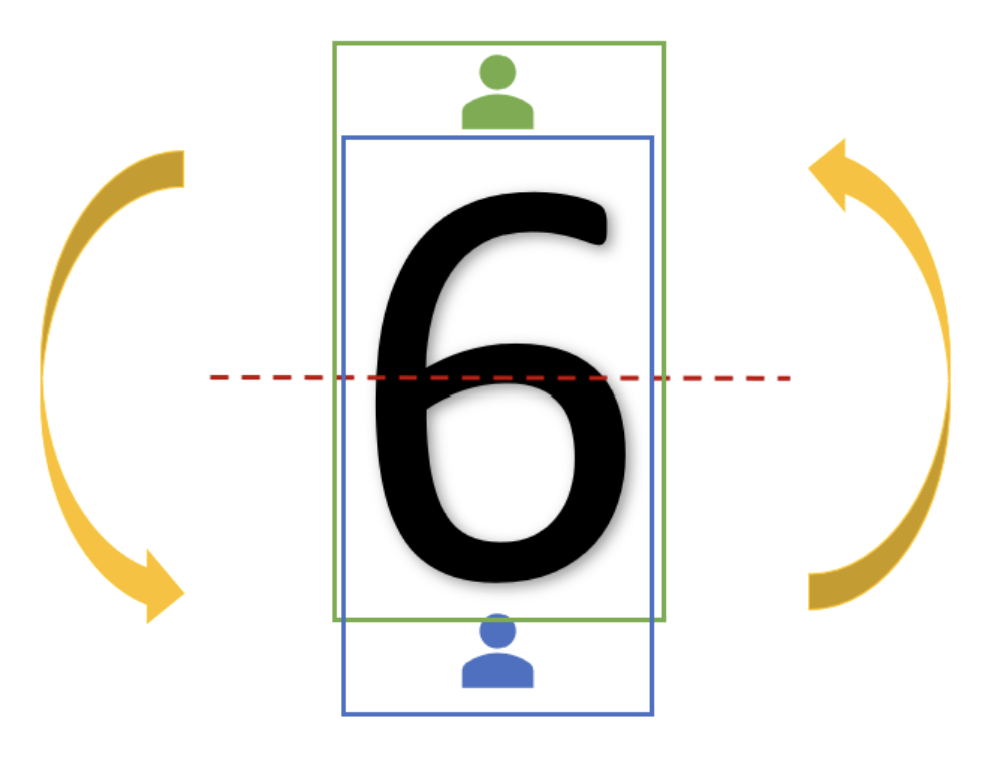6 or 9 - What do you see?
Picture this… You are on one side of the line (BLUE), and your partner is on the other (GREEN).
When you stay on your respective sides of the line you only see your perspective – either a 6 (you) ora 9 (them).
If you try to explain to your partner that you see a 6, they will likely tell you that you’re wrong; fromtheir point of view it is clearly a 9 – If this approach continues you and your partner will likely spenda lot of time arguing about who’s right and who’s wrong.
But! What if neither of you are wrong?
So, you get curious…You know that what you see is a 6 (you learned your numbers a long time ago), so you know that you’re right. Yet the person sitting across from you – someone that you trust – is telling you that it’s something else. Why?
Go over to their side, “Honey, I’m not seeing things the way you are. Can you help me to understand?” In doing this, you have moved past the idea of right and wrong (“If I am right, then he/she must be wrong”) and you’ve opened your mind to alternative perspectives and the idea of compromise.
My opinion matters, my partner’s opinion matters, and neither opinion is more important or valid than the other.
An important thing to remember is that you do not have to agree with their perspective in order to understand it. Maybe you see a 9 as well, but maybe you believe that the shape of an upside down 6 is equal to a ‘g’ and not a ‘9’; nines have straight tails and not curved ones. Just as you would appreciate their understanding, rest assured that they would appreciate yours.
The beauty of the exercise is in the fact that we do not need to agree with each other in order to respect differing perspectives.
